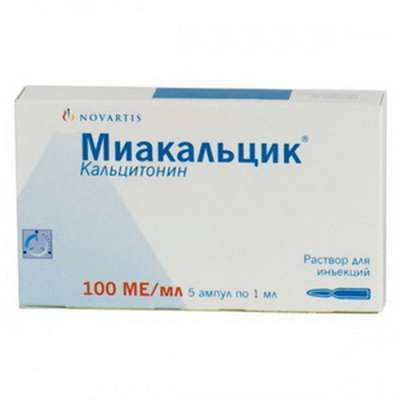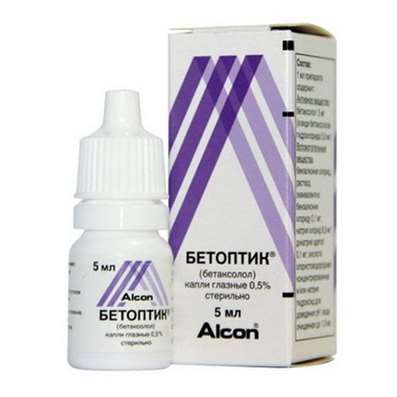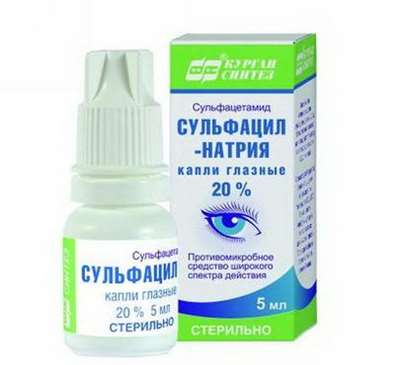Instruction for use: Lidocaine
I want this, give me price
Latin name: Lidocainum (genus. Lidocaini)
Chemical name
(2-Diethylamino) -N- (2,6-dimethylphenyl) acetamide (and as hydrochloride)
Gross formula
C14H22N2O
Pharmacological group:
Local Anesthetics
Antiarrhythmics
Ophthalmic products
The nosological classification (ICD-10)
G53.0 Neuralgia after shingles (B02.2 +): Postherpetic neuralgia; Postherpetic neuralgia in adults
G54 Lesions of nerve roots and plexuses: Radicular syndrome with osteochondrosis; Neuralgia of radicular origin; Plexitis; Radiculitis with radicular syndrome; Syndrome of radicular
I47.2 Ventricular tachycardia: Pirouette torsade de pointes; Symptomatic ventricular tachycardia; Pirouette tachycardia with myocardial infarction; Ventricular arrhythmia; Ventricular paroxysmal tachycardia; Ventricular tachyarrhythmia; Ventricular tachycardia; Life-threatening ventricular arrhythmia; Stable ventricular tachycardia; Stable monomorphic ventricular tachycardia; Paroxysmal bidirectional spindle-shaped ventricular tachycardia; Paroxysmal ventricular tachycardia
I49.3 Premature ventricular depolarization: Left ventricular asynergy; Ventricular arrhythmia; Expressed ventricular extrasystoles; Ventricular arrhythmia; Ventricular extrasystole; Ventricular arrhythmias; Ventricular extrasystole; Paroxysmal ventricular extrasystole; Recurrent ventricular arrhythmias; Ventricular extrasystole; Asynergy of the ventricles of the heart
I49.4 Other and unspecified premature depolarization: Extrasystolic arrhythmia; Extrasystolia; Extrasystoles, unspecified
I49.9 Disorder of heart rhythm, unspecified: Paroxysmal supraventricular tachycardia; Extrasystolic arrhythmia; Atrial tachysystolic arrhythmia; Supraventricular tachyarrhythmia; Supraventricular arrhythmias; AV reciprocal tachycardia; AV-node reciprocal tachycardia; Ventricular arrhythmia; Impaired heart rate; Antidromic reciprocal tachycardia; Heart rhythm disturbances; Arrhythmias; Arrhythmia; Heart arythmy; Arrhythmia due to hypokalemia; Ventricular tachyarrhythmia; High frequency of ventricular contraction; Heart rhythm disturbances; Paroxysmal supraventricular arrhythmia; Paroxysmal supraventricular arrhythmia; Paroxysmal rhythm disturbance; Paroxysmal atrial-ventricular rhythm; Cardiac arrhythmias; Supraventricular tachycardia; Tachyarrhythmia; Precordial abnormal pulsation
K94 * Diagnosis of digestive tract diseases: Hepatic and splenic scans; Visualization of the liver by invasive methods; Isotope scintigrams of the liver; Laparocentesis; Ultrasound examination of the liver; Magnetic resonance imaging of the liver; Computed tomography of the liver; Esophageal Manometry; Anoscopy; Visualization of the biliary tract; Ultrasonic visualization of the liver; Gastroscopy; Intestinal degassing before diagnostic tests; Degassing of the intestine before X-ray examination; Gastrointestinal diagnostics; Diagnosis of bleeding from the small intestine; Diagnosis of focal pathology of the liver; Diagnosis of secretory ability and acid-forming function of the stomach; Diagnostic intervention on the large intestine; Duodenal sounding; Duodenoscopy; Instrumental studies of the abdominal cavity organs; Intraoperative cholangiography; Irrigoscopy; Examination of gastric secretion; Gastrointestinal; Study of acid-forming function of the stomach; Study of the secretory function of the stomach; Colonoscopy; Controlling the effectiveness of lithotripsy; Determination of the degree of hypersecretion in duodenal ulcer; Preparation for diagnostic tests; Preparation for X-ray and instrumental methods of abdominal examination; Preparation for X-ray and ultrasound examination of abdominal organs; Preparation for X-ray or endoscopic examination of the digestive tract; Preparation for X-ray examination of the gastrointestinal tract with contrasting; Preparation for roentgenological examination of gastrointestinal tract with application of barium; Preparation for X-ray examination and ultrasound of the abdominal cavity organs; Preparation for X-ray examination or ultrasound of the abdominal cavity organs; Preparation for ultrasound and X-ray examination of the abdominal cavity organs; Preparation for endoscopic examination of the lower parts of the colon; Preparation for endoscopic or roentgenologic examination of the lower intestine; Preparation of the lower GI tract for endoscopy; Preparation of the colon for instrumental and radiographic examinations; Preparation of the colon for X-ray and endoscopy; Recto-Humanoscopy; Rectoscopy; Radiography of the digestive tract; X-ray diagnosis of achalasia of the esophagus; X-ray diagnosis of diseases of the digestive tract; X-ray diagnostics of the digestive tract; Radiocontrast examination of bile ducts Radiocontrast study of the digestive tract; Radiographic diagnosis of gastrointestinal tract; X-ray examinations of the digestive tract; X-ray examination of the duodenum and gallbladder; X-ray examination of the stomach; X-ray examination of the biliary tract and gallbladder; X-ray examination of the digestive tract; X-ray examination of the esophagus; Retrograde cholangiopancreatography; Retrograde endoscopic pancreatocholangiorentgenography; Sonography of the gastrointestinal tract; Splenoportography; Ultrasound of the abdominal cavity organs; Functional X-ray diagnosis in diseases of the stomach; Functional X-ray diagnosis in diseases of the intestine; Cholangiography; Cholangiography in cholelithiasis; Cholangiopancreatography; Cholecystography; Esophagoscopy; Endoscopic retrograde pancreatography; Endoscopic retrograde cholangiopancreatography; Endoscopic interventions; Endoscopic examination of the digestive system; Endoscopic examination of the lower parts of the large intestine; Endoscopic examination of the digestive tract; Endoscopy; ERCPR; Panendoscopy
M60 Myositis: Myositis; Fibrositis; Fibromyositis; Inflammatory disease of soft tissues
N999 * Diagnosis of diseases of the genitourinary system: Angiography of the kidneys; Research of excretory function of the kidneys; Ultrasound for the detection of acquired uterine cavity changes; Replacement of fistulous catheters; Diagnosis of amenorrhea; Evaluation of kidney function and their visualization; Cystoscopy; Vesicology; Intrauterine diagnostic procedures; Urological catheterization; Retrograde urography; Angiography with urinary tract disease; Ultrasonic examination of female genital organs; Instrumental studies of the pelvic organs; MRI of pelvic organs; Pyelography; Small gynecological manipulations; Ultrasound examination of the genitourinary system; Excretory urography; Colposcopy; Radiography of the genitourinary system; Cystourethroscopy; Cytology of the cervix; Cystography; Cystourethrography; Magnetic resonance imaging of the kidneys; Enlargement of the urethra; Retrograde pyelography; Urethroscopy; Ultrasound of female genital organs; Angiography of the kidney; Mictional urethrocystography
R52 Pain, not elsewhere classified: Pain syndrome of radicular origin; Pain syndrome of small and medium intensity of different genesis; Pain syndrome after orthopedic surgery; Pain syndrome in superficial pathological processes; Radicular pain in the background of osteochondrosis of the spine; Radicular pain syndrome; Pleural pain; Chronic pain
Z100.0 * Anesthesiology and premedication: Abdominal surgery; Adenomectomy; Amputation; Angioplasty of the coronary arteries; Carotid artery angioplasty; Antiseptic treatment of skin in wounds; Antiseptic treatment of hands; Appendectomy; Atheroctomy; Balloon coronary angioplasty; Vaginal hysterectomy; Venous bypass; Interventions on the vagina and cervix; Interventions on the bladder; Interference in the oral cavity; Reconstructive-reconstructive operations; Hand hygiene of medical personnel; Gynecological Surgery; Gynecological interventions; Gynecological operations; Hypovolemic shock during surgery; Disinfection of purulent wounds; Disinfection of the edges of wounds; Diagnostic Interventions; Diagnostic procedures; Diathermocoagulation of the cervix; Long-term surgeries; Replacement of fistulous catheters; Infection in orthopedic surgical interventions; Artificial heart valve; Kistectomy; Short-term outpatient surgery; Short-term operations; Short-term surgical procedures; Cryotyreotomy; Blood loss during surgical interventions; Bleeding during surgery and in the postoperative period; Kuldotsentez; Laser coagulation; Laserocoagulation; Laser retinopathy of the retina; Laparoscopy; Laparoscopy in gynecology; Likvornaya fistula; Small gynecological operations; Small surgical interventions; Mastectomy and subsequent plastic surgery; Mediastinotomy; Microsurgical operations on the ear; Mukinging operations; Suturing; Minor surgery; Neurosurgical operation; Eclipse of the eyeball in ophthalmic surgery Orchiectomy; Pancreatectomy; Pericardectomy; The rehabilitation period after surgical operations; Reconvalence after surgical intervention; Percutaneous transluminal coronary angioplasty; Pleural Thoracocentesis; Pneumonia postoperative and post traumatic; Preparing for surgical procedures; Preparing for a surgical operation; Preparation of the surgeon's arms before surgery; Preparation of the colon for surgical interventions; Postoperative aspiration pneumonia in neurosurgical and thoracic operations; Postoperative nausea; Postoperative hemorrhage; Postoperative granuloma; Postoperative shock; Early postoperative period; Myocardial revascularization; Resection of the apex of the tooth root; Resection of the stomach; Bowel resection; Resection of the uterus; Liver resection; Small bowel resection; Resection of a part of the stomach; Reocclusion of the operated vessel; Gluing of tissues during surgical interventions; Suture removal; Condition after eye surgery; Condition after surgery; Condition after surgery in the nasal cavity;Condition after gastrectomy; Condition after resection of the small intestine; Condition after tonsillectomy; Condition after removal of duodenum; Condition after phlebectomy; Vascular Surgery; Splenectomy; Sterilization of surgical instrument; Sterilization of surgical instruments; Sternotomy; Dental surgery; Dental intervention on periodontal tissues; Strumectomy; Tonsillectomy; Thoracic surgery; Total gastrectomy; Transdermal intravascular coronary angioplasty; Transurethral resection; Turbinectomy; Removal of a tooth; Cataract removal; Removing Cysts; Removal of tonsils; Removal of myoma; Removal of mobile milk teeth; Removal of polyps; Removal of a broken tooth; Removal of the uterus; Removal of seams; Urethrotomy; Fistula of the luminal ducts; Frontoetmoidohaimorotomy; Surgical infection; Surgical treatment of chronic ulcers of extremities; Surgery; Surgery in the anus; Surgery on the large intestine; Surgical practice; Surgical procedure; Surgical interventions; Surgical interventions on the digestive tract; Surgical interventions on the urinary tract;Surgical interventions on the urinary system; Surgical interventions on the genitourinary system; Surgical intervention on the heart; Surgical procedures; Surgical operations; Surgical operations on veins; Surgical intervention; Vascular; Cholecystectomy; Partial resection of the stomach; Extraperitoneal hysterectomy; Percutaneous transluminal coronary angioplasty; Percutaneous transluminal angioplasty; Coronary artery bypass grafting; Extirpation of the tooth; Extirpation of infant teeth; Extirpation of pulp; Extracorporeal circulation; Extraction of the tooth; Extraction of teeth; Extraction of cataracts; Electrocoagulation; Endourological interventions; Episiotomy; Ethmoidotomy; Complications after tooth extraction
Z40 Preventive Surgery: Inhalational Anesthesia; Intratracheal Intubation; Intubation of the trachea; Surface anesthesia in ophthalmology
CAS code
137-58-6
Characteristics of the substance Lidocaine
White or almost white crystalline powder, poorly soluble in water. Used in the form of hydrochloric acid salt, easily soluble in water.
Pharmacology
Pharmacological action - local anesthetic, antiarrhythmic.
Antiarrhythmic activity is caused by oppression of phase 4 (diastolic depolarization) in Purkinje fibers, a decrease in automatism, suppression of ectopic foci of excitation. The speed of rapid depolarization (phase 0) does not affect or slightly reduces. Increases the permeability of membranes for potassium ions, accelerates the process of repolarization, and shortens the action potential. Does not change the excitability of the sinus-atrial node, has little effect on the conductance and contractility of the myocardium. With iv introduction is quick and short (10-20 min).
The mechanism of the local anesthetic effect consists in stabilizing the neuronal membrane, reducing its permeability for sodium ions, which prevents the occurrence of an action potential and impulses. Antagonism with calcium ions is possible. Quickly hydrolyzed in a slightly alkaline environment of tissues and after a short latent period, it lasts for 60-90 minutes. With inflammation (tissue acidosis) anesthetic activity decreases. Effective with all types of local anesthesia. Expands blood vessels. It does not irritate the fabric.
With the / in the introduction of Cmax created almost "on the needle" (45-90 s), with a / m - after 5-15 minutes. Sufficiently quickly absorbed from the mucous membrane of the upper respiratory tract or oral cavity (Cmax achieved in 10-20 minutes). After oral administration, bioavailability is 15-35%, since 70% of the absorbed drug undergoes biotransformation when it "passes through" the liver. In plasma, 50-80% binds to proteins. Stable concentration in the blood is established after 3-4 hours with continuous intravenous administration (in patients with acute myocardial infarction - after 8-10 hours). The therapeutic effect develops at a concentration of 1.5-5 μg / ml. Easily passes through the histohematological barriers, including the BBB. First comes in well-blood-supplying tissues (heart, lungs, brain, liver, spleen), then into adipose and muscle tissue. Penetrates through the placenta, in the body of a newborn is found 40-55% of the concentration of the mother in childbirth. Excreted in breast milk. T1 / 2 after IV bolus administration - 1,5-2 hours (for newborns - 3 hours), with long-term IV infusions - up to 3 hours or more. If there is a violation of liver function, T1 / 2 may increase 2 times or more. Quickly and almost completely metabolized in the liver (unchanged in the urine output is less than 10%). The main pathway of degradation is oxidative N-dealkylation, with active metabolites (monoethylglycinexylidine and glycinexylidene) having T1 / 2 2 h and 10 h respectively. With chronic renal failure, cumulation of metabolites is possible. The duration of action is 10-20 min with IV injection and 60-90 min - with IM.
When applied locally to intact skin (in the form of plates), there is a therapeutic effect that is sufficient to relieve the pain syndrome, without developing a systemic effect.
Application of Lidocaine
Ventricular extrasystole and tachyarrhythmias, incl. with acute myocardial infarction, in the postoperative period, ventricular fibrillation; all kinds of local anesthesia, incl. surface, infiltration, conductive, epidural, spinal, intraligamentary with surgical interventions, painful manipulations, endoscopic and instrumental studies; in the form of plates - pain syndrome with vertebrogenic lesions, myositis, postherpetic neuralgia.
Contraindications
Hypersensitivity, history of epileptiform seizures for lidocaine, WPW-syndrome, cardiogenic shock, weakness of the sinus node, heart block (AV, intraventricular, sinus-atrial), severe liver disease, myasthenia gravis.
Restrictions on the use
Conditions accompanied by a decrease in hepatic blood flow (for example, in chronic heart failure, liver disease), progression of cardiovascular failure (usually due to the development of heart block and shock), weakened patients, advanced age (over 65 years), violation of the integrity of the skin imposition of the plate), pregnancy, breast-feeding.
Application in pregnancy and lactation
In pregnancy and breastfeeding it is possible if the expected effect of therapy exceeds the potential risk to the fetus and the baby.
The action category for fetus by FDA is B.
Side effects of Lidocaine
From the side of the nervous system and sensory organs: CNS depression or excitation, nervousness, euphoria, flashing of the "flies" before the eyes, photophobia, drowsiness, headache, dizziness, tinnitus, diplopia, impaired consciousness, oppression or respiratory arrest, muscle twitching, tremor, disorientation, convulsions (the risk of their development increases against hypercapnia and acidosis).
From the cardiovascular system and blood (hematopoiesis, hemostasis): sinus bradycardia, impaired conduction of the heart, transverse cardiac blockade, a decrease or increase in blood pressure, collapse.
On the part of the intestine: nausea, vomiting.
Allergic reactions: generalized exfoliative dermatitis, anaphylactic shock, angioedema, contact dermatitis (hyperemia at the site of application, skin rash, urticaria, pruritus), a brief burning sensation in the area of the aerosol or at the place of application of the plate.
Other: feeling of heat, cold or numbness of limbs, malignant hyperthermia, depression of the immune system.
Interaction
Beta-adrenoblockers increase the likelihood of bradycardia and hypotension. Norepinephrine and beta-blockers, reducing hepatic blood flow, reduce (increases toxicity), isoprenaline and glucagon - increase the clearance of lidocaine. Cimetidine increases plasma concentration (displaces from binding to proteins and slows inactivation in the liver). Barbiturates, inducing the induction of microsomal enzymes, stimulate the degradation of lidocaine and reduce its activity. Anticonvulsant drugs (hydantoin derivatives) accelerate biotransformation in the liver (the concentration in the blood decreases), with iv injection, an increase in the cardiodepressant action of lidocaine is possible. Antiarrhythmics (amiodarone, verapamil, quinidine, aymalin) potentiate cardiodepression. The combination with novocainamide can cause CNS excitement and hallucinations. Strengthens the oppressive effect of anesthesia (hexobarbital, thiopental sodium) and hypnotics on the respiratory center, weakens the cardiotonic effect of digitoxin, deepens the muscle relaxation caused by curare-like drugs (paralysis of the respiratory muscles is possible). MAO inhibitors prolong local anesthesia.
Overdose
Symptoms: psychomotor agitation, dizziness, general weakness, decreased blood pressure, tremor, tonic-clonic convulsions, coma, collapse, AV blockade possible, CNS depression, respiratory arrest.
Treatment: discontinuation, pulmonary ventilation, oxygen therapy, anticonvulsants, vasoconstrictors (noradrenaline, mezaton), with bradycardia - anticholinergics (atropine). It is possible to carry out intubation, mechanical ventilation, resuscitation. Dialysis is ineffective.
Routes of administration
IV, IM, locally (in the form of an aerosol, gel, spray, plate).
Precautions for the substance Lidocaine
Care should be taken with liver and kidney disease, hypovolemia, severe heart failure with contractility, genetic predisposition to malignant hyperthermia. In children, weakened patients, elderly patients, dose adjustment in accordance with age and physical status is necessary. When administered to a vascularized tissue, an aspiration test is recommended.
If used topically, use with caution in case of infection or injury at the site of application.
If during the application of the plate a burning sensation or reddening of the skin occurs, it must be removed and not applied until the redness disappears. Used plates should not be accessible to children or pets. Immediately after use, the plate should be destroyed.
Special instructions
To prolong the action of anesthetic, it is possible to add 1 drop of 0.1% solution of adrenaline to 5-10 ml of lidocaine (the maximum permissible dose is increased to 500 mg).

 Cart
Cart





